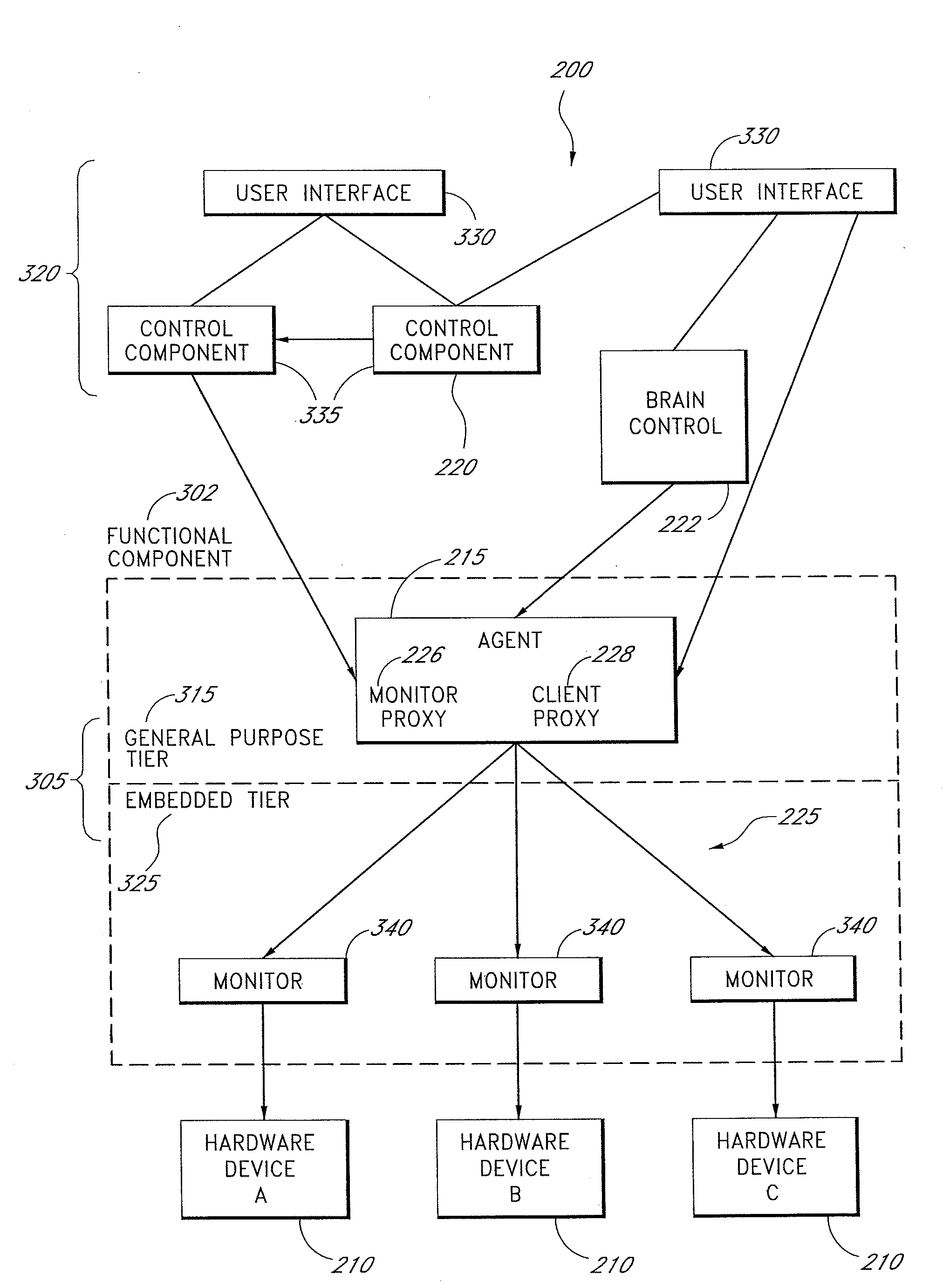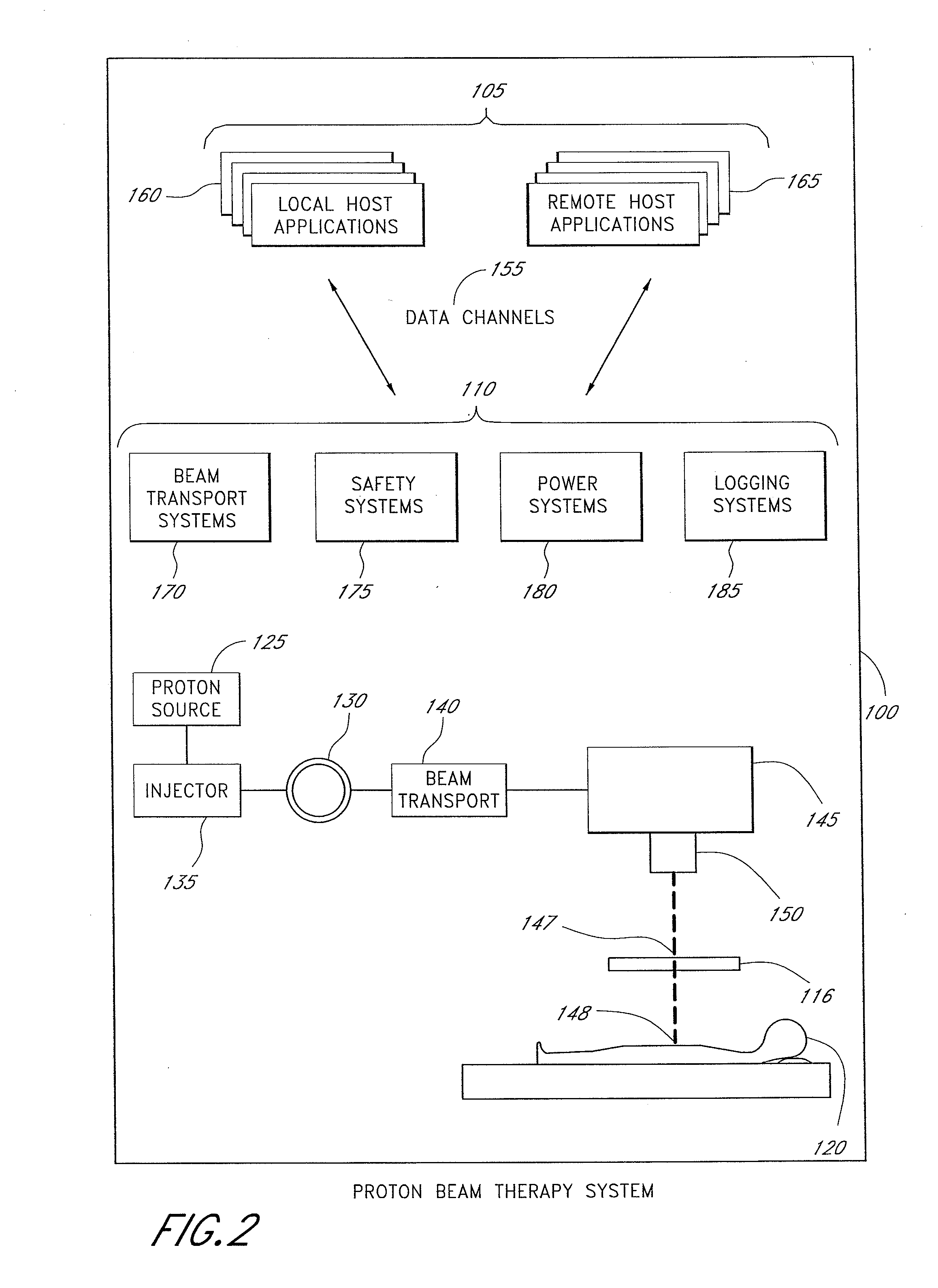Proton beam therapy control system
a control system and proton beam technology, applied in the field of distributed control systems, can solve the problems of localized cell damage, damage to other healthy cells within the patient's body, and disrupt the growth and progression of tumors, so as to reduce channel or socket utilization, reduce communication coordination and management complexity, and increase connection security
- Summary
- Abstract
- Description
- Claims
- Application Information
AI Technical Summary
Benefits of technology
Problems solved by technology
Method used
Image
Examples
Embodiment Construction
[0036]FIG. 2 illustrates one embodiment of a proton beam therapy system (PBTS) 100 for patient treatment that is coupled to one or more host applications 105. In one aspect, the host applications 105 communicate with a plurality of functional components 110 used in conjunction with a treatment station 115. The functional components 110 comprise monitoring and management components that direct the activities of the treatment station 115. Each functional component 110 further comprises one or more hardware devices present in the treatment station 115 which are desirably associated and collectively managed within the particle beam therapy system 100.
[0037]During the treatment process, the operation of these hardware devices are desirably coordinated to direct a precisely calibrated and aligned proton beam 147 towards a specific target region or isocenter 148 of the patient 120. In one embodiment, the treatment station 115 comprises a proton source 125 connected to an accelerator 130 by...
PUM
 Login to View More
Login to View More Abstract
Description
Claims
Application Information
 Login to View More
Login to View More - R&D
- Intellectual Property
- Life Sciences
- Materials
- Tech Scout
- Unparalleled Data Quality
- Higher Quality Content
- 60% Fewer Hallucinations
Browse by: Latest US Patents, China's latest patents, Technical Efficacy Thesaurus, Application Domain, Technology Topic, Popular Technical Reports.
© 2025 PatSnap. All rights reserved.Legal|Privacy policy|Modern Slavery Act Transparency Statement|Sitemap|About US| Contact US: help@patsnap.com



